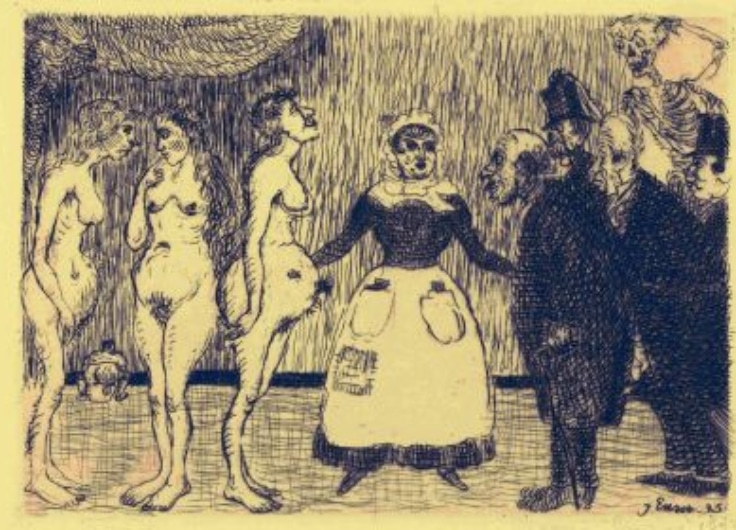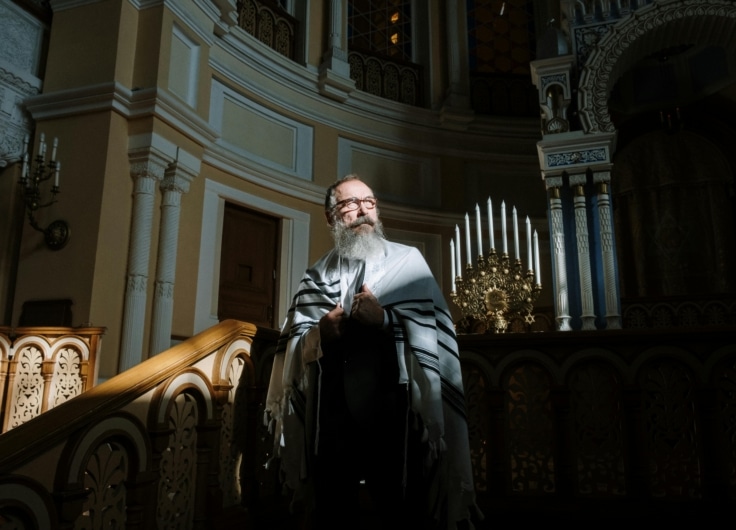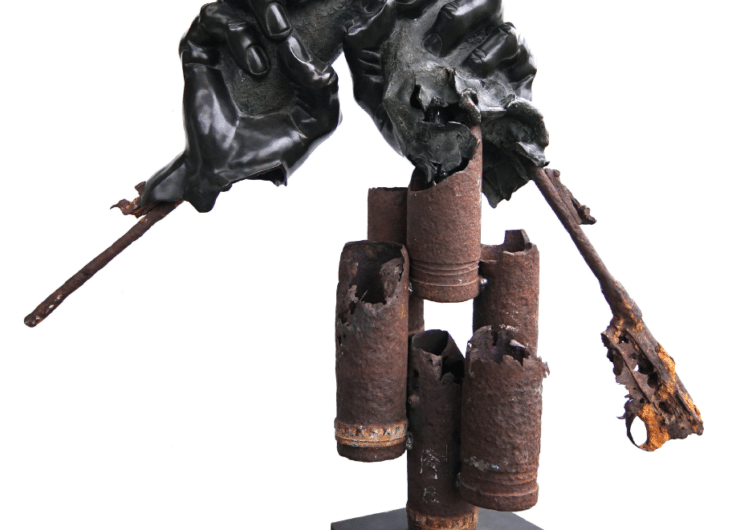Is NATO Still Relevant Since It Has Lost Credibility?
From the 1990s, after the fall of the Berlin Wall, with the end of the Cold War, NATO had to look for a new role. What more did the North Atlantic Alliance have to do? Geopolitical relations have gradually changed since then. The United States is withdrawing more and more, while China is establishing a strong influence. Today, European countries realise that they must take their own defence seriously. If it is to play an important role in the world, then Europe needs credible armies.
You rarely see tourists in this part of Berlin. Even though one of the key moments in recent European history happened right here. An historic event that was simply unthinkable for so long, until it suddenly seemed inevitable. A sober monument, moving in its simplicity, serves as a reminder. But it is easily overlooked, which is what most passers-by do. If you pay attention, you will see that on an untidy verge next to the pavement on the north side of Bornholmer Strasse, ten rusty steel beams, irregularly spaced apart, have been sunk into the ground. On these beams are lines of text. Together they form a kind of news report, in short bulletins, of the chaotic evening of 9 November 1989. The evening the Berlin Wall fell.
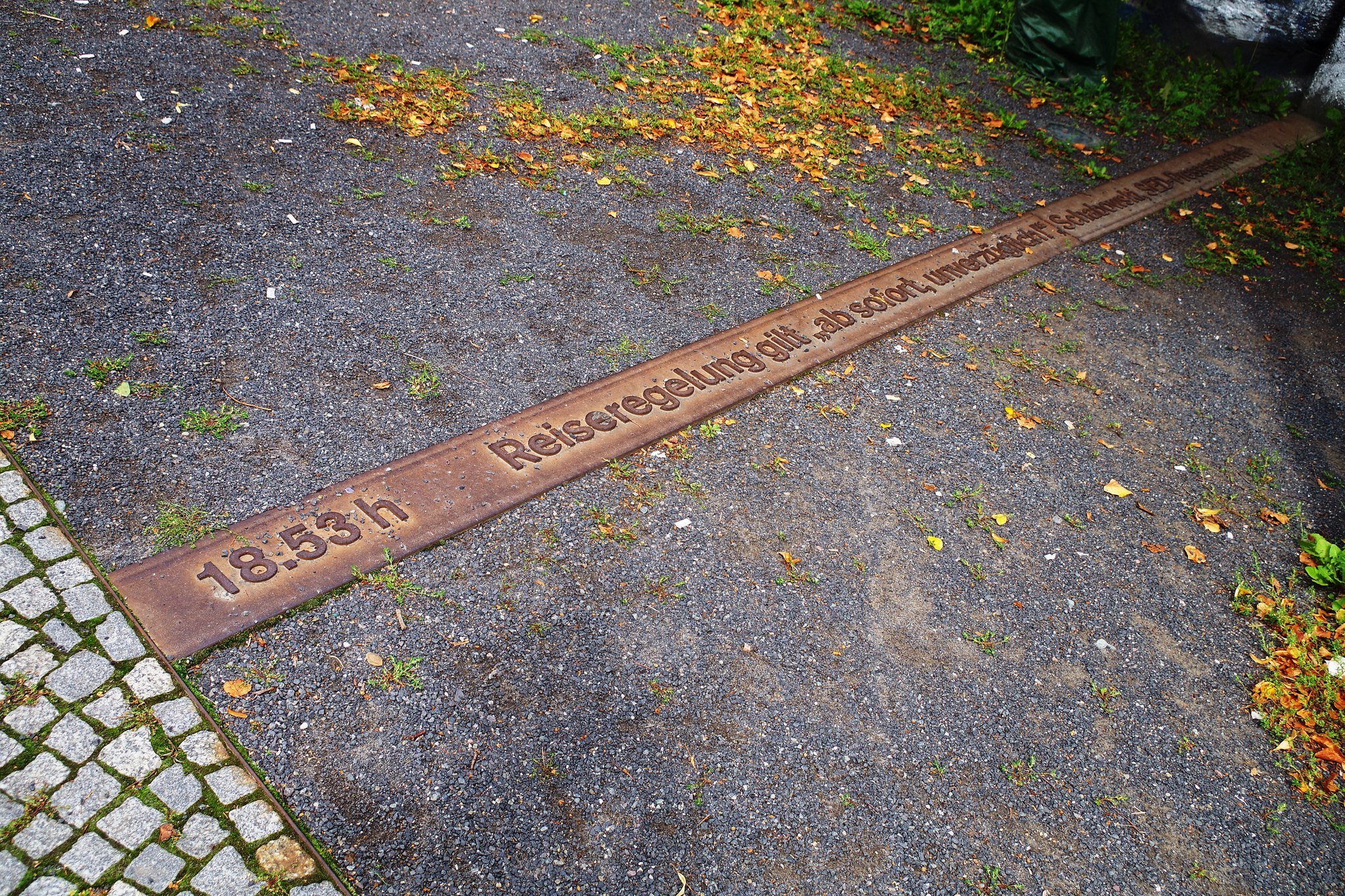
© Flickr
And with the fall, a dangerous period in post-war Europe came to an end. The dawn of the new era was promising. After the decades-long strain of the Cold War, it finally brought release to the European continent – and freedom where it had been absent. For forty years, the North Atlantic Treaty Organisation had played a key role in controlling the highly flammable situation. NATO’s first Secretary General, the British Lord Ismay, had aptly formulated the Alliance’s goal: to keep the Russians out, the Americans in, and the Germans down. That had been very successful. And concerning the third objective in that list: in 1955 West Germany had even become a member of the Alliance, thus ten years after the end of the Second World War, part of “the West”.
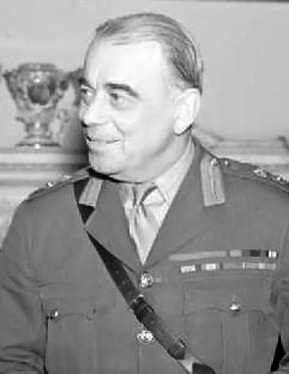 NATO’s first Secretary General, the British Lord Hastings Ismay, had aptly formulated the Alliance’s goal: to keep the Russians out, the Americans in, and the Germans down.
NATO’s first Secretary General, the British Lord Hastings Ismay, had aptly formulated the Alliance’s goal: to keep the Russians out, the Americans in, and the Germans down.© Wikipedia
The hopeful period that began with the fall of the Wall now appears to have been only an interlude. The prelude to great uncertainty, to a new world order with new perils. Coming from the east side of Bornholmer Strasse you walk past the crucial moments of that historic day in 1989, step by step. Small, shifting grains of sand that caused a political avalanche on a global scale. As you approach the Bösebrücke, the bridge over the railway tracks that separated East and West Berlin, the messages are broadcast as on a live blog avant la lettre.
It starts quietly with:
09.00 am: GDR ministries are working on a new travel arrangement
12.30 pm: Draft travel scheme goes to Cabinet and SED Politburo
Then, after reports that the new scheme has been approved and that a press conference is being broadcast live, comes the announcement from a confused spokesperson, who accidentally overshoots the mark:
6.53 pm: Travel arrangements apply ‘with immediate effect, immediately’ – Schabowski, press spokesperson for the SED, the Socialist Unity Party of Germany
7.05 pm: ‘GDR opens borders’ – alarm message Associated Press News (AP)
7.30 pm: ‘Private trips abroad can be requested’ – Aktuelle Kamera, GDR
But even without application forms, East Berliners made their way to the border crossings, first in their tens, soon in their hundreds, then in their thousands:
8.15 pm: Fifty East Berliners on Bornholmer Strasse
8.40 pm: ‘It is not possible to let you leave right here right now’ – policeman
9:20 pm: ‘Let through the 500 most troublesome’ – Stasi Colonel
10:42 pm: ‘The gates of the Wall are wide open’ – Tagesthemen news programme, ARD
And finally:
11.30 pm: ‘We are overwhelmed. We’re opening everything!’ – Stasi Officer
And so the East Berliners surged to freedom in the West, into the other half of Berlin. First at Bornholmer Strasse, followed soon after via other border crossings. In less than a day, the explosive potential of the Cold War had been defused. It can happen that fast.
The discreet monument is no history book, and so the context of the historic breakthrough is not taken into consideration. Nothing is said about the Soviet leader Mikhail Gorbachev’s reforms, or his refusal to intervene militarily when the Wall started to crumble. Nothing about the mass flight of East Germans to the West in the summer and autumn of 1989. Nothing about the large-scale demonstrations against the GDR regime, first in Leipzig and later in other cities. Nor is there anything about NATO, the military-political alliance that for forty years had been the pillar of security in Western Europe.
A new mission
If you include all these developments, then it becomes clear that the Soviet Union, the communist states in Eastern and Central Europe and also the Warsaw Pact, the counterpart of NATO, had long since lost their credibility. But it wasn’t until the Wall fell that the whole endeavour disintegrated. Thirty years later, the question arises whether NATO has lost so much credibility in the meantime that it could also suddenly crumble if put to the test. There is ample evidence. It just requires getting used to the new reality in order to assess its scope.
The significance of what happened in 1989 only became clear gradually
Also, the significance of what happened in 1989 – not just in Berlin but throughout communist Eastern and Central Europe – only became clear gradually. The communist dominoes fell, one after another. The two Germanys were able to reunite in 1990. The Soviet Union went down a year later. Poland, the Czech Republic, Hungary and later also other former Eastern Bloc countries joined NATO, as did the Baltic countries, which had been part of the Soviet Union.
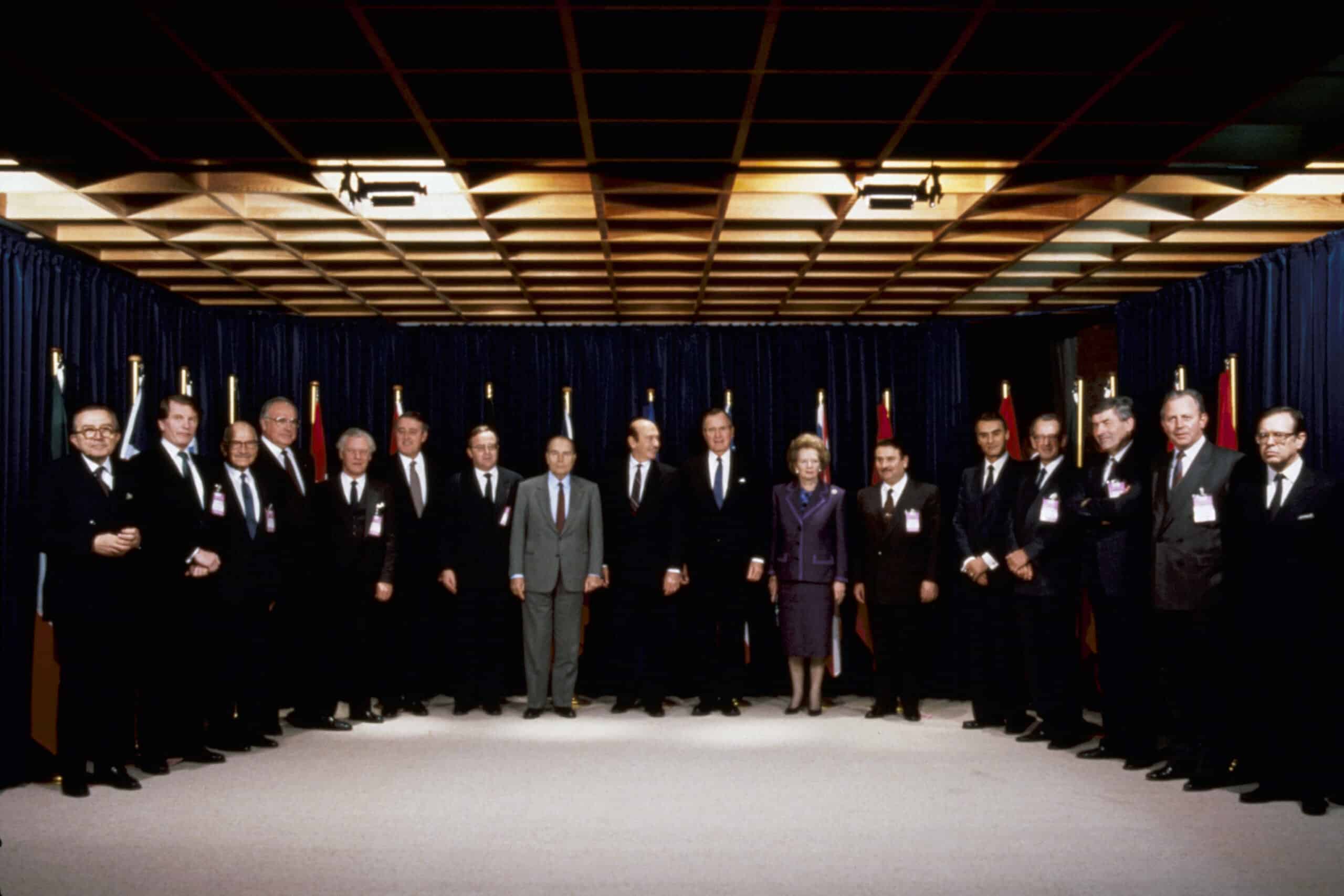 North Atlantic Council Meeting at the level of Heads of State and Government in Brussels, 4 December 1989
North Atlantic Council Meeting at the level of Heads of State and Government in Brussels, 4 December 1989© NATO
But what the end of the Cold War meant for NATO’s future remained unclear. What was the purpose of the organisation, now that the Soviet Union and its threat had disappeared? The Eastern and Central European countries knew what it meant: protection against Russia. But the Western member states believed that a rapprochement with Moscow was not only desirable but also possible. Naturally, NATO would continue to guarantee the transatlantic connection – but were the shared interests still sufficient to warrant doing so?
The Alliance found a new mission outside the territory of its member states. First in the Balkans and after the 11 September 2001 attacks against the United States also outside Europe. On 12 September 2001, for the first time in its history, the Alliance invoked Article 5, which decrees that an attack on one member state is considered an attack on all member states. Subsequently, the Alliance focused for years on operations in Afghanistan and other distant regions. Defending one’s own territory only regained priority after Russia’s shock annexation of Crimea in 2014.
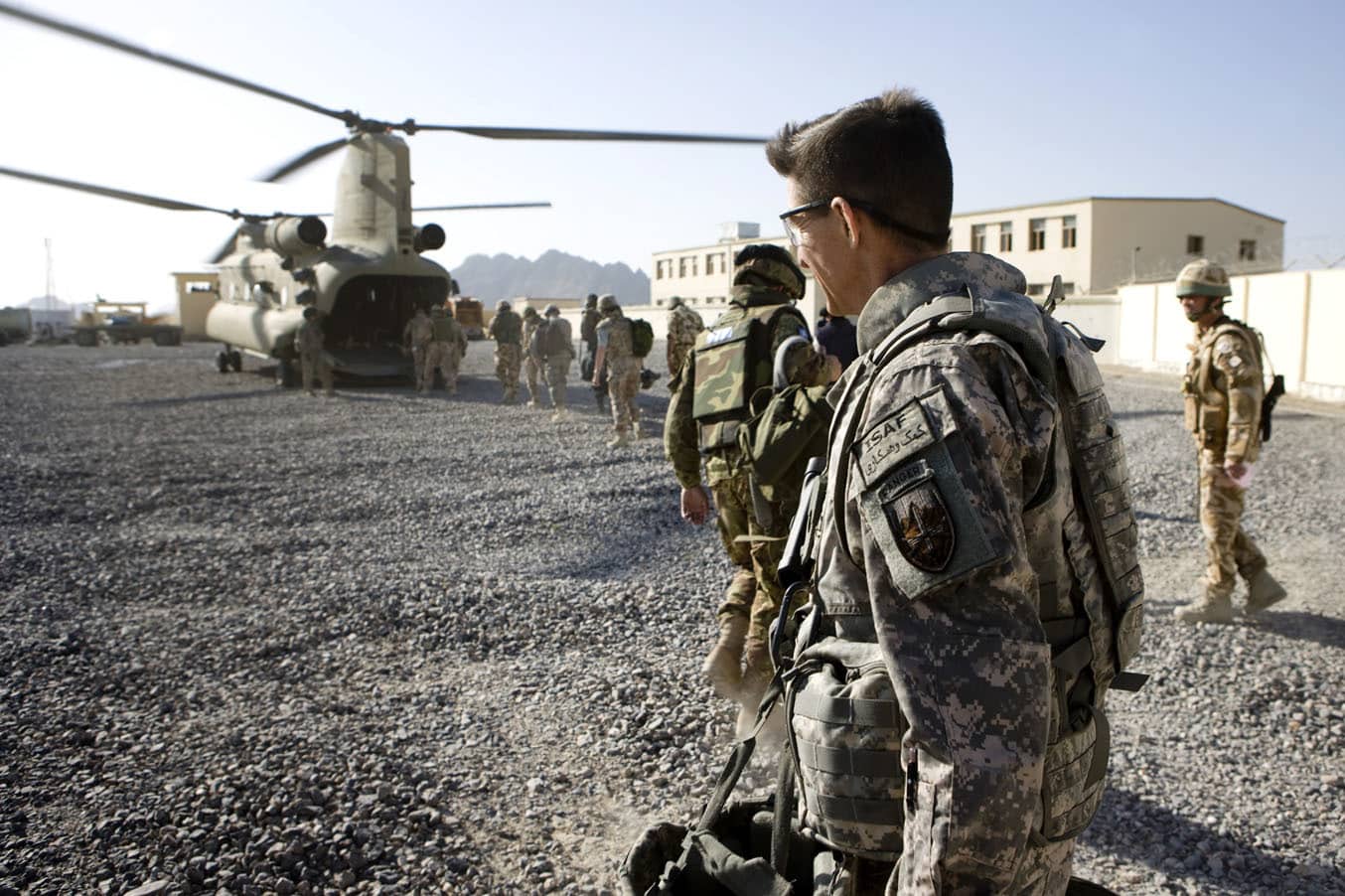 Soldiers of the International Security Assistance Force (ISAF) in Kandahar, Afghanistan, 2009
Soldiers of the International Security Assistance Force (ISAF) in Kandahar, Afghanistan, 2009© NATO / Liepke Plancke, AVDD, RNLAF
Credibility has always been NATO’s most important asset: no deterrence without credibility. During the Cold War, the Western European member states found shelter under America’s nuclear umbrella. Large numbers of American troops were stationed in Europe. The Netherlands, Belgium, Germany, Italy and Turkey even welcomed America’s tactical nuclear weapons to their territory. And the guarantee of Article 5 was a warning to the Soviet Union not to meddle in Western Europe, since that would mean immediately having to deal with America.
But it was never a cast-iron guarantee. Would the United States truly be prepared to engage in a nuclear war with the Soviet Union to fulfil NATO commitments? Would a US president really respond to a nuclear attack on Berlin if that meant risking the destruction of Los Angeles? We could not be sure.
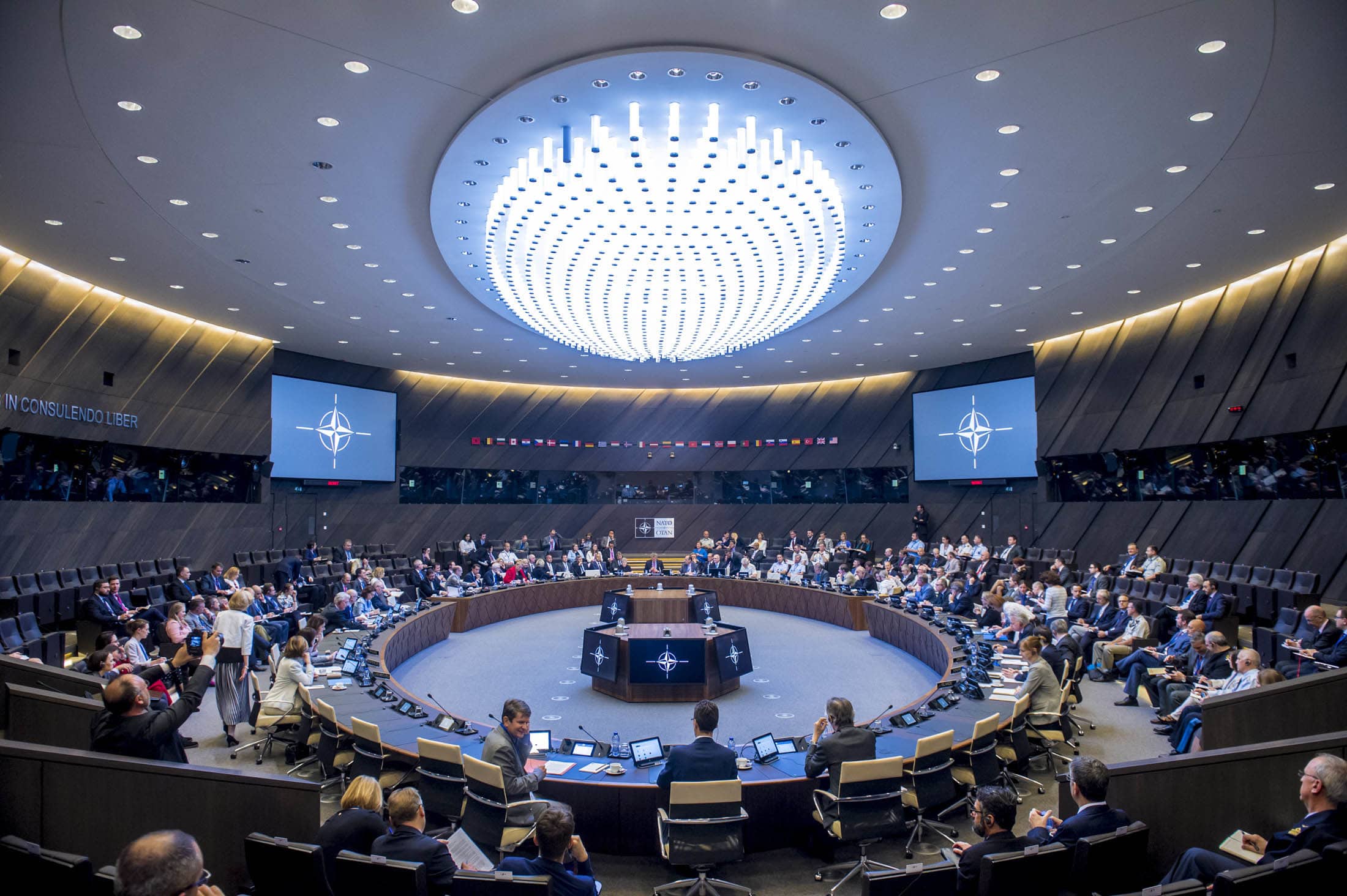 North Atlantic Council meeting room in the new NATO headquarters in Brussels
North Atlantic Council meeting room in the new NATO headquarters in Brussels© NATO
Moreover, for those who thought it through, it was even ‘perfectly obvious’, even for the Russians, that Washington would not risk the lives of millions of Americans for Berlin. At least, that is what elder statesman Dean Acheson wrote in 1961 as an advisor to President John F. Kennedy in a confidential memorandum. Credible deterrence, in his view, had to come from strengthening conventional troops in Europe. But such relativistic attitudes on NATO’s clause of mutual assistance were preferably not discussed out loud. Credibility is a vulnerable good.
(continue reading below the illustration)

© Trui Chielens
Pivot to Asia
That is still the case, except that the forty-fifth President of the United States has repeatedly made clear he does not care. Not only has Donald Trump stated that NATO is “obsolete,” he even considers and treats key NATO allies as opponents, while seeking continued rapprochement with Russia. He has cast doubt, too, on Article 5 and America’s willingness to stand up for certain NATO countries.
When asked why the United States should defend Montenegro (which joined NATO in 2017), the president was quick to share his own reservations. He replied that since the people of that country are very aggressive –‘“they may get aggressive, and congratulations, you’re in World War Three.’ In Moscow, Trump’s reservations will have been met with glee. It is possible, even, that the alleged Montenegrin national character may have been hinted at by Russian President Vladimir Putin, during the Russia-United States summit meeting in Helsinki a few days earlier. In any case, no NATO member that takes its own security seriously can ignore these signals from the major power and driving force within NATO.
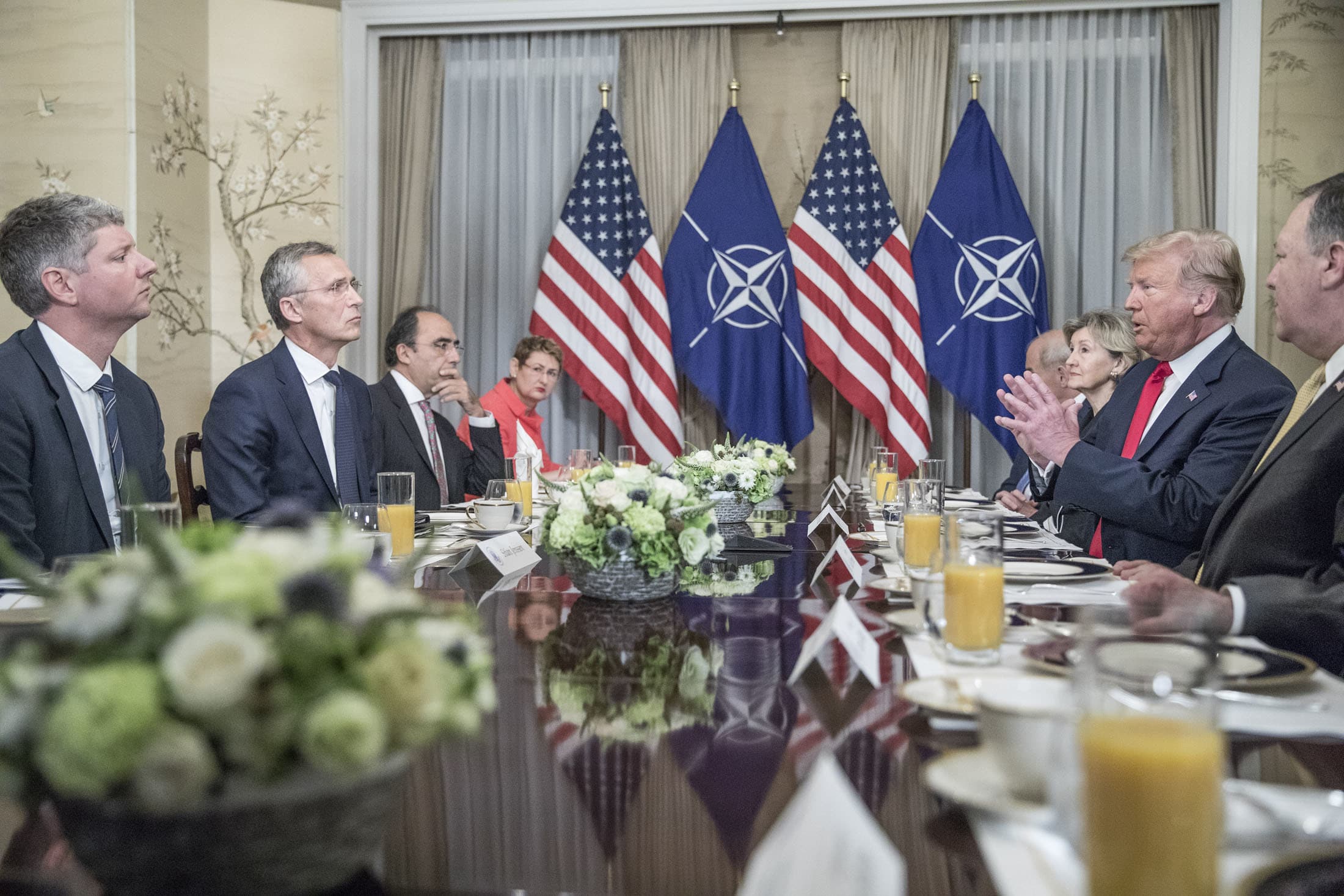 US President Donald Trump meets NATO Secretary General Jens Stoltenberg during the NATO Summit Brussels in 2018
US President Donald Trump meets NATO Secretary General Jens Stoltenberg during the NATO Summit Brussels in 2018© NATO
But it is not only Trump who has contributed to the weakening of NATO. Under his predecessor Barack Obama, the United States had already started to turn away from Europe. Not in such blunt language, nor with such senseless squandering of goodwill and credibility. But Obama’s much-discussed ‘pivot to Asia’ at the time should have signalled to the European allies that the decades-old guarantee of transatlantic solidarity is no longer upheld on the American side. Even back then, the major ally thought it was about time to take less responsibility for Europe and to shift its attention elsewhere.
The two percent rule
In Europe, member countries have not taken these developments on board. For too long, America’s decades-old refrain that the principle of NATO solidarity means taking national defence seriously and spending money on it, has gone virtually ignored. It was only during Obama’s presidency that European NATO countries reluctantly began to slightly increase their defence expenditure. With all Trump’s bluster, they have done so with more conviction.
Trump’s accusation that Europeans do not pay ‘their contribution’ to NATO is an oversimplification of the issue, and incorrect. It is not that member states have committed to pay money to NATO but that NATO members have to spend more on their own defence. As per an agreement made at the NATO summit in Wales in 2014.
 NATO explosive ordnance disposal experts are training their Jordanian counterparts in the basics of counter-improvised explosive device work near Amman, Jordan.
NATO explosive ordnance disposal experts are training their Jordanian counterparts in the basics of counter-improvised explosive device work near Amman, Jordan.© NATO
Nor is it true, as is often claimed, that NATO countries ‘pledged’ to bring their defence budgets to a minimum of two percent of their gross domestic product (GDP) at the Wales summit. What the members agreed was phrased a lot less firmly, on purpose – and therefore in principle also less binding. With regard to defence expenditure, they pledged to ‘aim to move towards the 2% guideline within a decade’. To move towards … by taking very small steps you can already meet this requirement.
The two percent rule is problematic also for other reasons. As GDP grows, defence spending can grow in real terms, while remaining the same or even declining as a percentage of an increasing GDP. While spending more money on defence, your score can fall below NATO’s recommendation.
Conversely, a recession can have a paradoxical advantage for the European NATO countries. If GDP declines, but defence expenditures go unchanged, the percentage “automatically” increases in the direction of two percent.
Despite these incongruities, the 2% guideline increasingly dominates internal debates within NATO. It is certainly a necessary stick, but also a source of frustration and reproach. Time and again, Trump stresses that Americans are being seriously hard done by when European countries, Germany in particular, fail to reach that 2% standard.
Breach of confidence
Most European NATO member states certainly need to upgrade their defence. For years the Netherlands, for instance, even in times of economic prosperity, had been satisfied with defective and insufficient equipment. There was even a lack of ammunition when it came to training exercises. All tanks were sold. Investing in sufficient well-trained personnel was not a priority either.
Yet however much extra money is needed on defence budgets, the two percent discussion entirely overlooks a more important issue. Among NATO member states, confidence in NATO ally America is waning.
Among NATO member states, confidence in NATO ally America is waning
In the summer of 2019, one of NATO’s former Secretary Generals no less, Jaap de Hoop Scheffer, expressed serious reservations about ongoing operations by the US throughout the world. On the Dutch television news programme Nieuwsuur, when the former NATO chief was interviewed about possible Dutch participation in a maritime mission in the Persian Gulf, to protect oil tankers from possible Iranian aggression, he did not oppose it. His advice was pragmatic: ‘Don’t put yourself directly under American leadership, under this president.’ And recognising, of course, how remarkable it is for someone of his background to have such a concern, he added, ‘I couldn’t have imagined saying that five years ago, as former NATO Secretary General.’
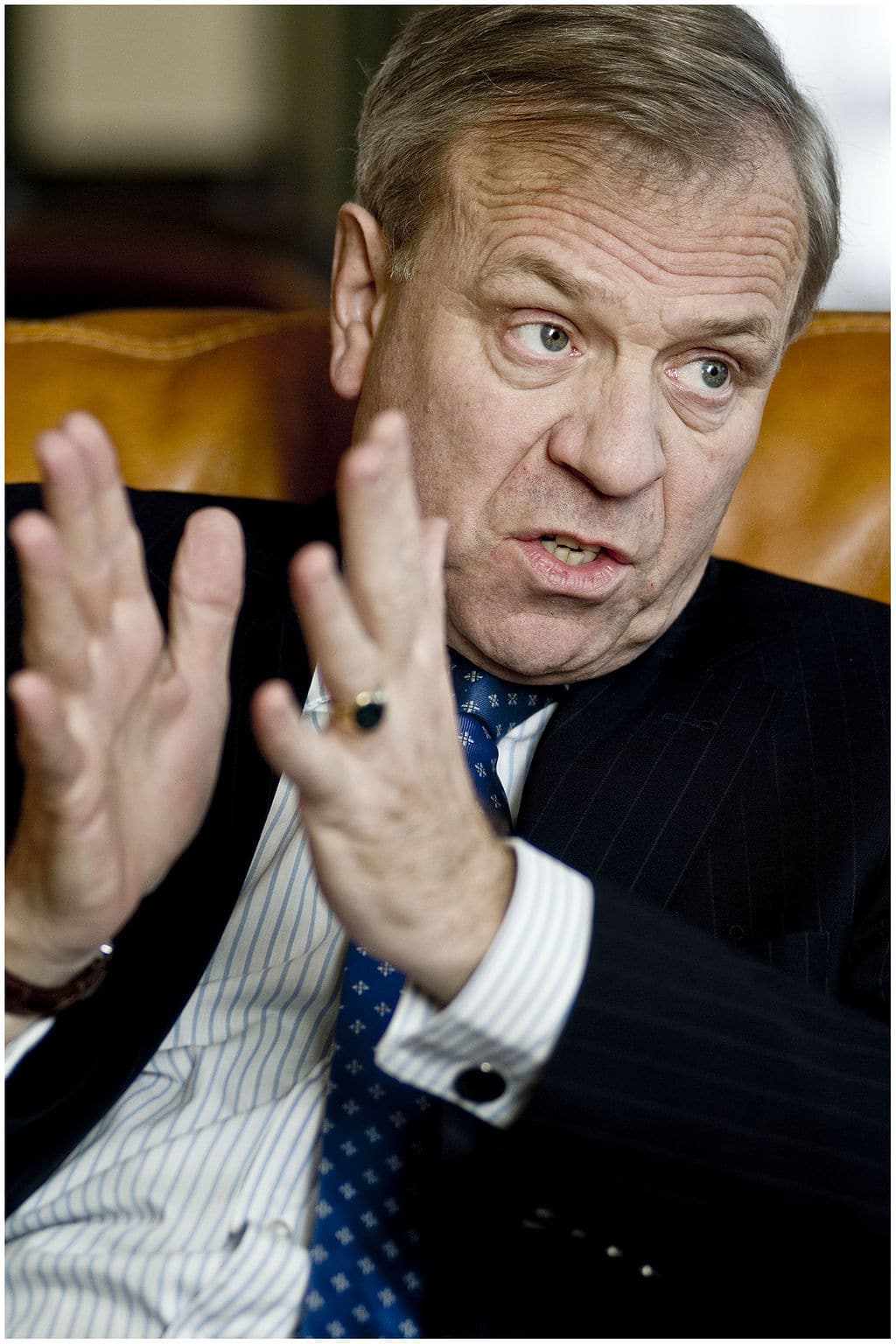 Former Secretary General Jaap de Hoop Scheffer expressed serious reservations about ongoing operations by the US throughout the world.
Former Secretary General Jaap de Hoop Scheffer expressed serious reservations about ongoing operations by the US throughout the world.© Wikipedia / Michiel Hendryckx
Since NATO was founded in 1949, the Alliance, as an embodiment of the transatlantic bond, has always been an important cornerstone of the Netherlands’ foreign policy. Not just as a form of military insurance, but as a political starting point. NATO membership stands for the break with their pre-war policy of neutrality.
The secretary general of the Alliance was a Dutchman on two occasions: Joseph Luns from 1971 to 1984, and Jaap de Hoop Scheffer from 2004 to 2009. Even after 1989, NATO was the anchor in transatlantic relations.
From 2006 to 2010, the Dutch armed forces took on a difficult and dangerous mission in Afghanistan when – stationed in the southern province of Uruzgan – they participated in the stabilization and reconstruction of the country, for which NATO had established the International Security Assistance Force (ISAF). Opinion polls consistently show around three-quarters of the Dutch population to be in favour of NATO – a rating achieved by few other member states.
Opinion polls consistently show around three-quarters of the Dutch population to be in favour of NATO
But besides a loss of confidence in the de facto leader of NATO, the United States, another problem of a more fundamental nature has arisen. In Germany, the largest European NATO country, a significant proportion of the public is particularly reluctant to engage in any kind of military action – including in NATO.
A statement in 2016 by the then Minister of Foreign Affairs Frank-Walter Steinmeier, now President of the Federal Republic of Germany, illustrates the point well. Less than two years after Russia’s annexation of Crimea, he disapprovingly described a military exercise by NATO in the member states of Poland and the Baltic countries as ‘a show of force’.
In light of the history of the twentieth century, German caution with regard to military matters is understandable. But now that Europe is being thrown back on its own resources, including in terms of security, a reappraisal of the importance of modern, well-equipped forces in Germany would be appropriate. Increasing defence budgets is not enough.
Credible armies
Though you can spend and spend on new tanks, planes and better trained soldiers, it is all worth very little if the sense that it is important to have an effective military force is lacking. This is certainly the case in a country such as Germany, with its Parlamentsarmee
that can only be deployed with the permission of the Bundestag.
Angela Merkel’s fourth government took a first step in the summer of 2019 to make the Bundeswehr more visible to Germans and also bring it closer to the general population: from 2020, soldiers in uniform can travel by train for free. A good sign, but it is not much more than a start.
Strengthening military cooperation between European countries is essential
Thirty years after the fall of the Wall, Europe is facing major new shifts in power, and with them dangerous uncertainties. In addition to the erosion of the relationship with the United States, there is the exit of the United Kingdom from the European Union. Brexit, and the irritations between the UK and the EU that accompany it, can also have profound security implications.
Regardless of how long NATO remains standing, strengthening military cooperation between European countries is essential. Not to create a European army; the military and strategic cultures of European countries, and their political interests, diverge too much for that. But in order to establish credible military units and therefore be able to reinforce Europe’s diplomatic and political leverage.
A more sombre monument?
In this time of transition to a new geopolitical order, it is not difficult to imagine what another (presumably sombre) monument (in Berlin? Brussels? Or …?) would look like, showing the run-up, step by step, to the moment when suddenly everything changed.
19 June 2016: German Foreign Minister denounces NATO exercise in Eastern European member states as ‘a show of force’
15 January 2017: Prospective US President Trump calls NATO ‘obsolete’
25 May 2017: In front of NATO headquarters in Brussels, Trump decides not to confirm endorsement of Article 5 of the North Atlantic Treaty, the guarantee of mutual assistance
15 July 2018: Shortly before meeting with Russian President Putin, Trump calls the European Union an ‘enemy’
18 July 2018: A few days later, he casts doubt on whether the United States would be ready to provide military assistance to its small NATO-ally Montenegro in case of emergency – because it could lead to World War III
14 January 2019: The New York Times newspaper reports that Trump has discussed the possibility of the United States withdrawing from NATO with colleagues
This article is the English translation of Als de geloofwaardigheid weg is. De NAVO in tijden van Trump, published in the book Nulpunt 1945 (Zero Point 1945, Ons Erfdeel vzw, 2020).




